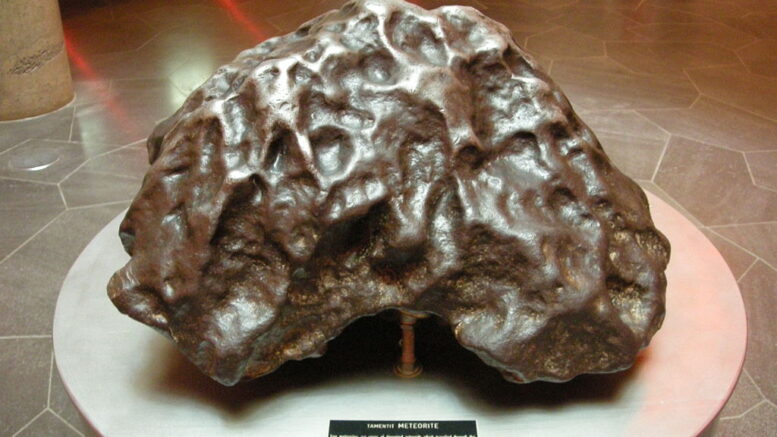All meteorites are not made the same, as we will discuss in this introductory article. This is not meant to be an all encompassing article, but a start for those looking to learn more about the topic. These differences make all the difference between minute things such as affecting their discovery on Earth and survival in space. Some types are more common in space, but are harder to find due to the composition of Earth.
There are three major types of objects that can be classified:
- iron meteorites: these are almost completely made of metal
- stony-iron meteorites: these have nearly equal amounts of metal and silicate crystals
- stony meteorites: these mostly have silicate minerals
Iron Meteorites
These consist overwhelmingly of an iron–nickel alloy known as meteoric iron that usually consists of two mineral phases: kamacite and taenite. These objects originate from cores of planetesimals. Although they are fairly rare compared to the stony meteorites, comprising only about 5.7% of witnessed falls, iron meteorites have historically been heavily over-represented in collections. As collectors have an easier time identifying these types of meteors and their greater resistance to weathering, these have become the dominant type in collections. Two classifications are in use by the scientific community, which are the classic structural classification and the newer chemical classification. The older structural classification is based on the presence or absence of the Widmanstätten pattern, which can be assessed from the appearance of polished cross-sections that have been etched with acid. This is connected with the relative abundance of nickel to iron. A newer chemical classification scheme based on the proportions of the trace elements Ga, Ge and Ir, which can further help scientists classify these objects into further subtypes.
Stony-Iron Meteorites
These consist of nearly equal parts of meteoric iron and silicates. This distinguishes them from the stony meteorites, that are mostly silicates, and the iron meteorites, that are mostly meteoric iron. Another differentiation is that they dont show any signs of alteration. They are therefore achondrites. The stony-irons are divided into mesosiderites and pallasites. Pallasites have a matrix of meteoric iron with embedded silicates. Mesosiderites are breccias which show signs of metamorphism. The iron occurs in clasts instead of a matrix.
Stony Meteorites
These are any meteorites that consist largely of rock-forming minerals. These are the most abundant kind of meteorite, and are divided into two groups: chondrites and achondrites. Chondrites are physically and chemically the most primitive meteorites in the solar system. Achondrites, were all produced by melting of their parent bodies. Although most achondrites are fragments of asteroids, a few come from the Moon or Mars.
Sources
If you’re curious about the differences between Meteors, Comets, and Asteroids, check out this article on the subject.

Be the first to comment on "Meteorites: An Introduction"